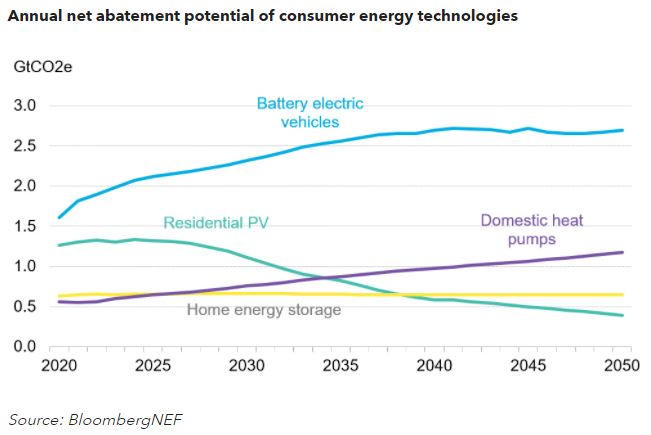Passenger electric vehicles, rooftop solar, home batteries, and domestic heat pumps could go a long way in addressing three of the largest sources of household emissions: electricity, transport, and heat. Without intervention, uptake of these technologies will fall far short of their potential. The abatement could be achieved much sooner if policy makers introduced measures to break down barriers and support rapid consumer adoption.


- Decarbonizing households using mature, commercially available technologies require little to no behavioral change, and offer a number of benefits over large-scale infrastructure or manufacturing.
- In aggregate, passenger EVs, rooftop PV, home batteries, and domestic heat pumps could lower households emissions by 6 billion metric tons of carbon emissions per year, equivalent to almost 18% of global CO2 emissions.
- EVs present the greatest abatement opportunity available to consumers. Electrifying the global fleet of 1.2 billion passenger vehicles could provide 1.6Gt of net abatement annually, a figure which will rise as grids charging the EV fleet are decarbonized.
- Residential rooftop PV could lower emissions by 1.2Gt annually, a figure which will diminish as grids become cleaner. If solar is to be relied on for emissions reductions, it should be deployed soon and paired with other technologies.
- Battery storage will bolster the abatement potential of rooftop solar. Storage optimized to discharge during peak demand periods is more likely to be displacing fossil fuel generation.
- Replacing domestic gas, oil, and coal boilers with heat pumps could abate over half a billion tons of annual emissions, a figure which will increase as grids are decarbonized.
- (This note clarifies a reference to “domestic PV” in the second bullet that should read “domestics heat pumps”, and that “6Gt” is the annual abatement potential.)